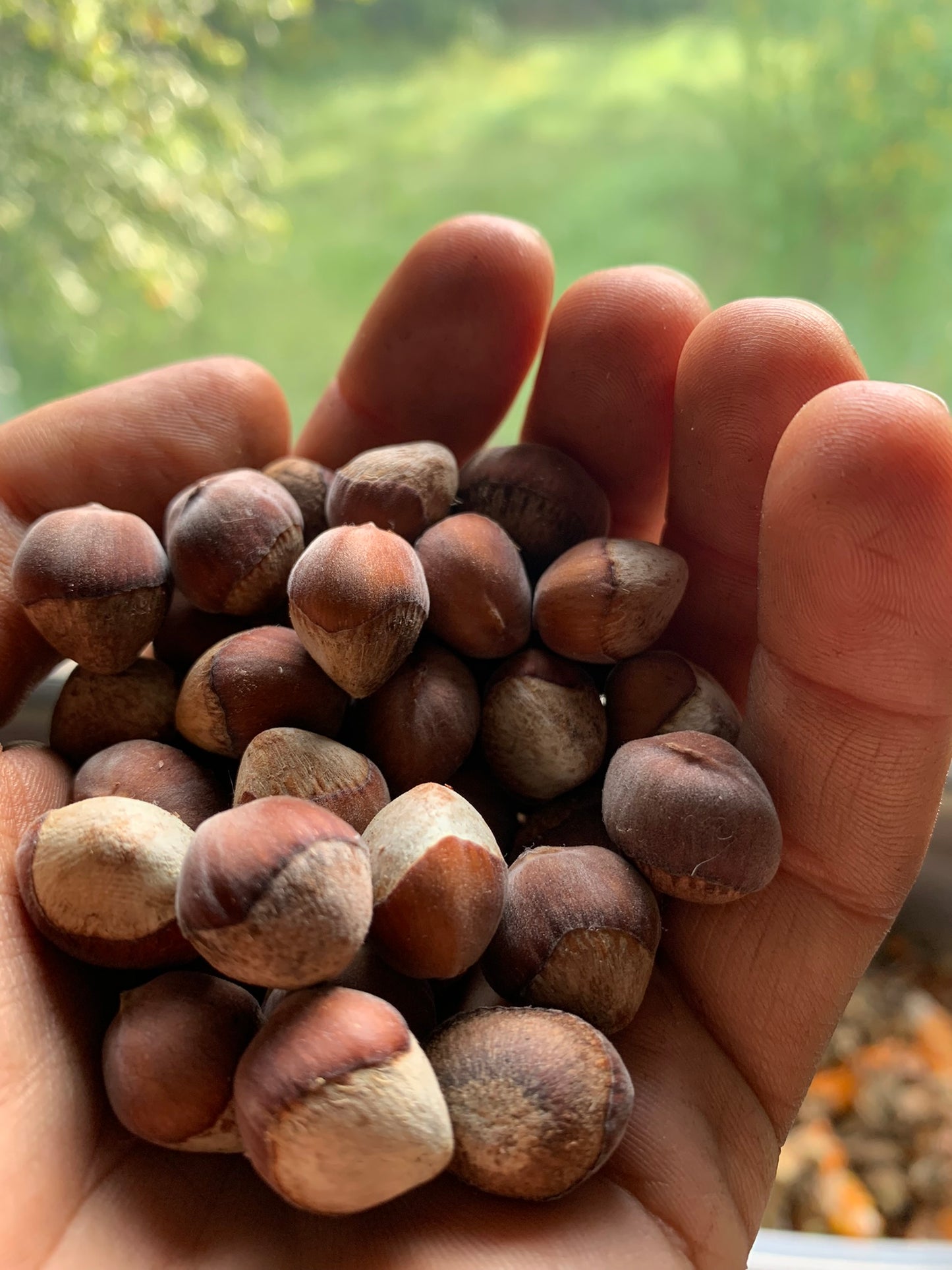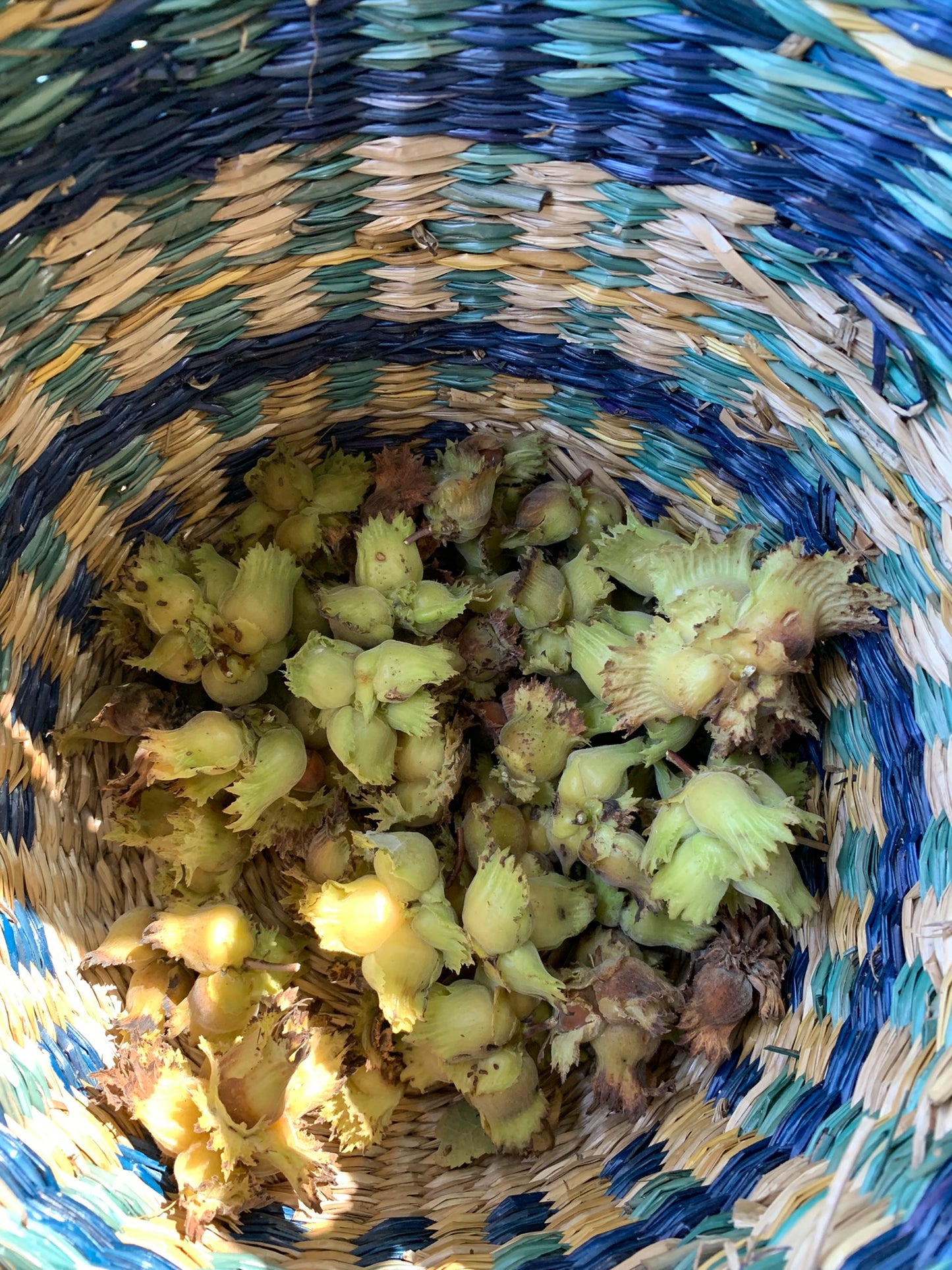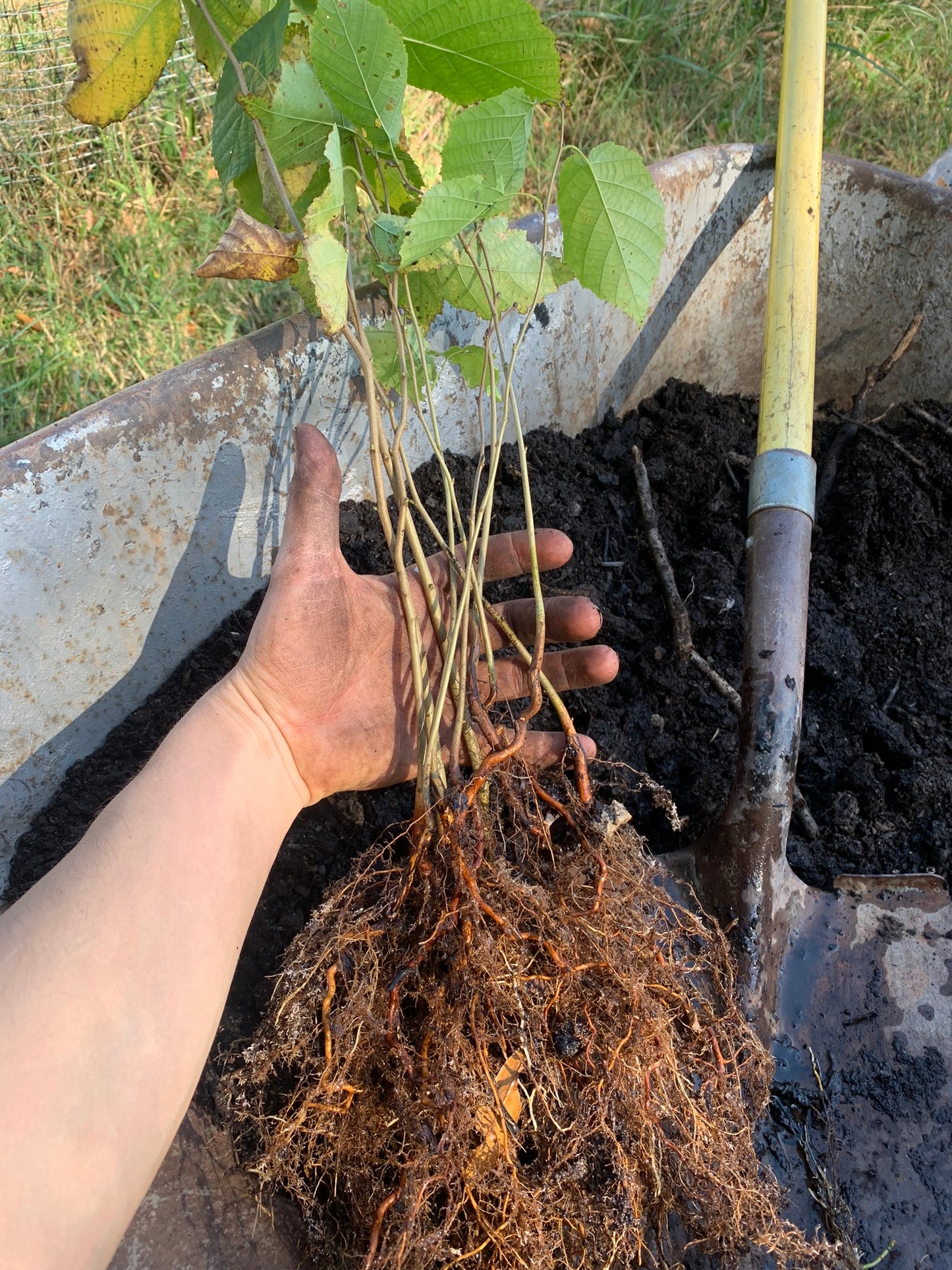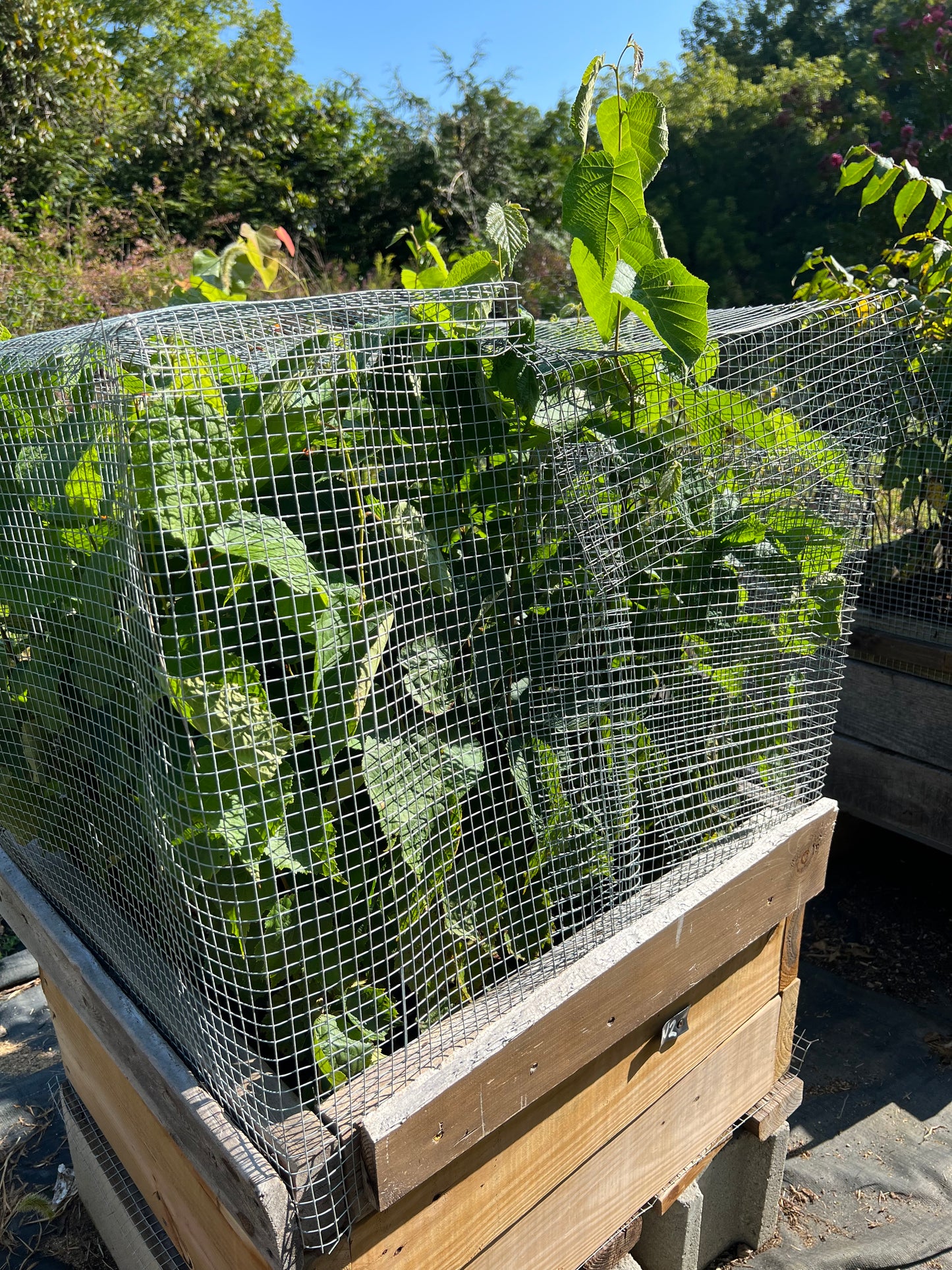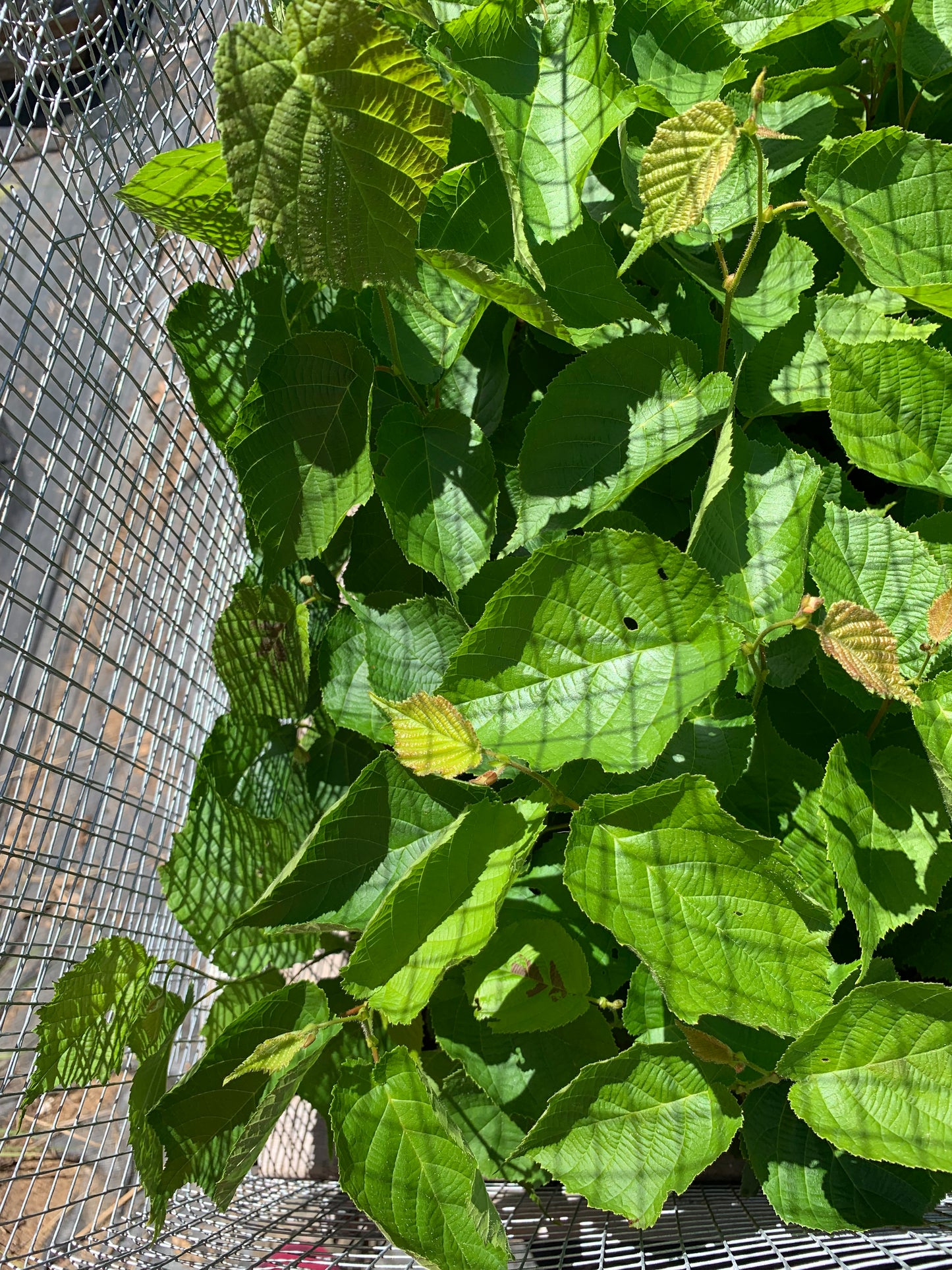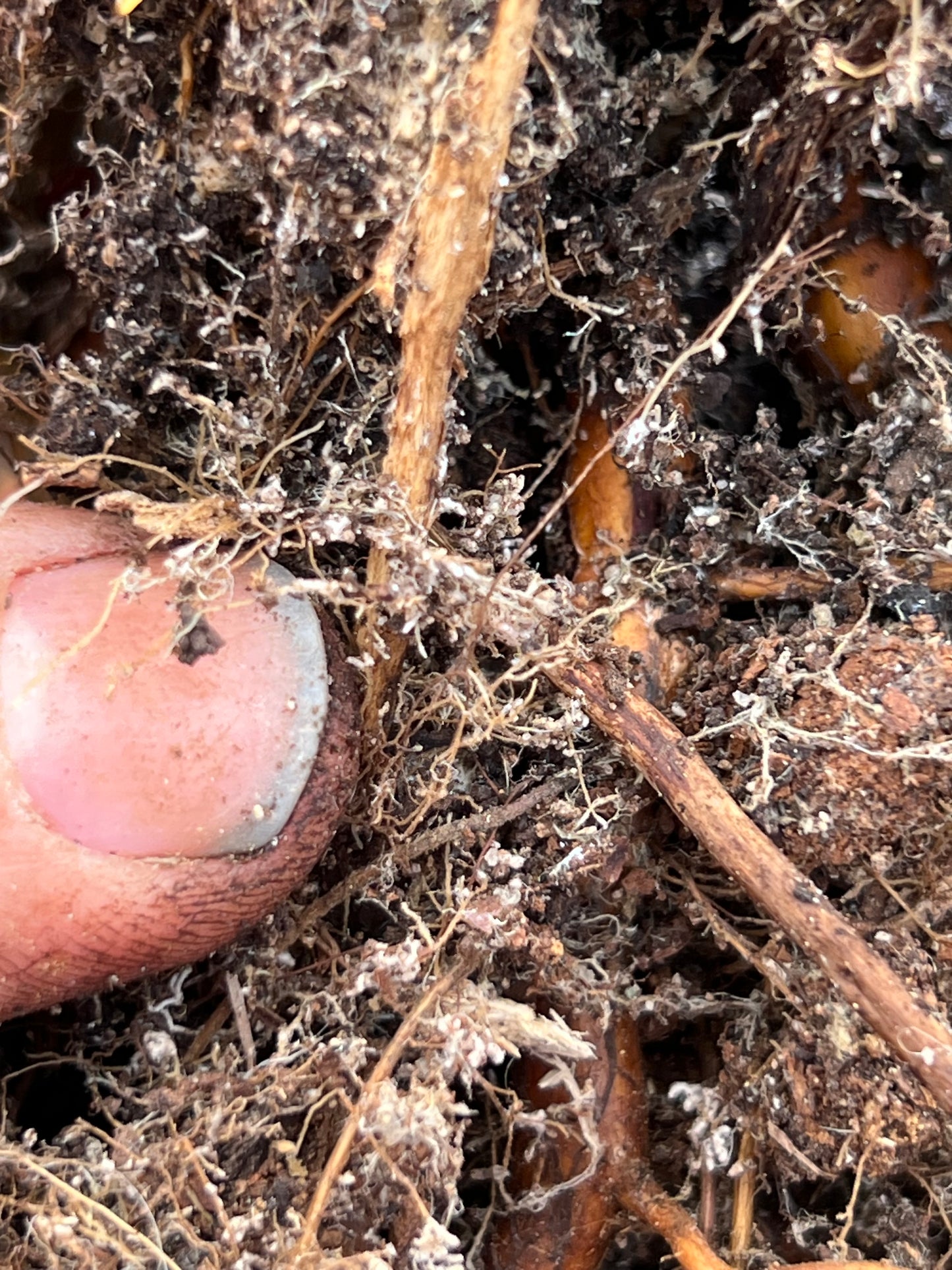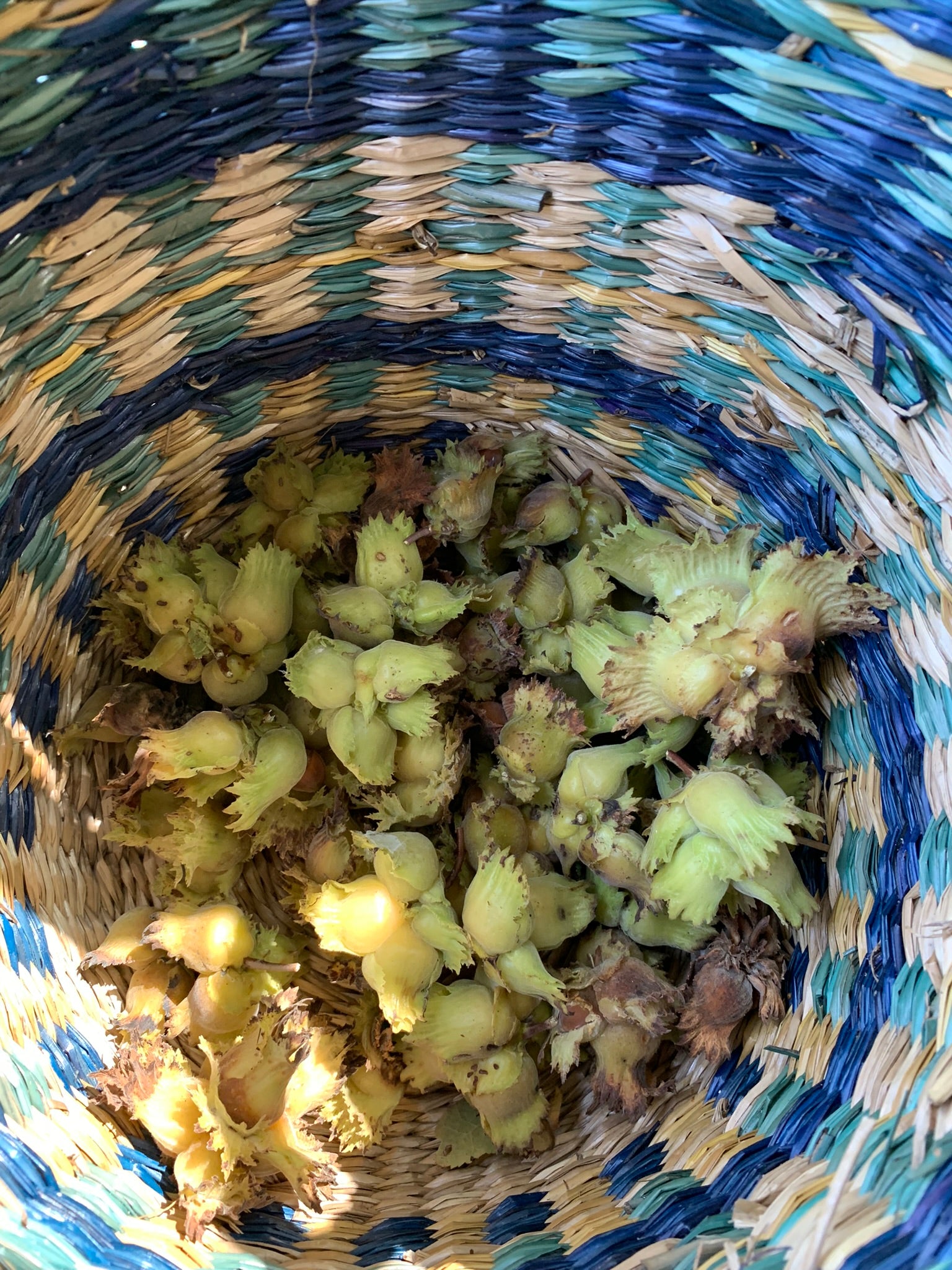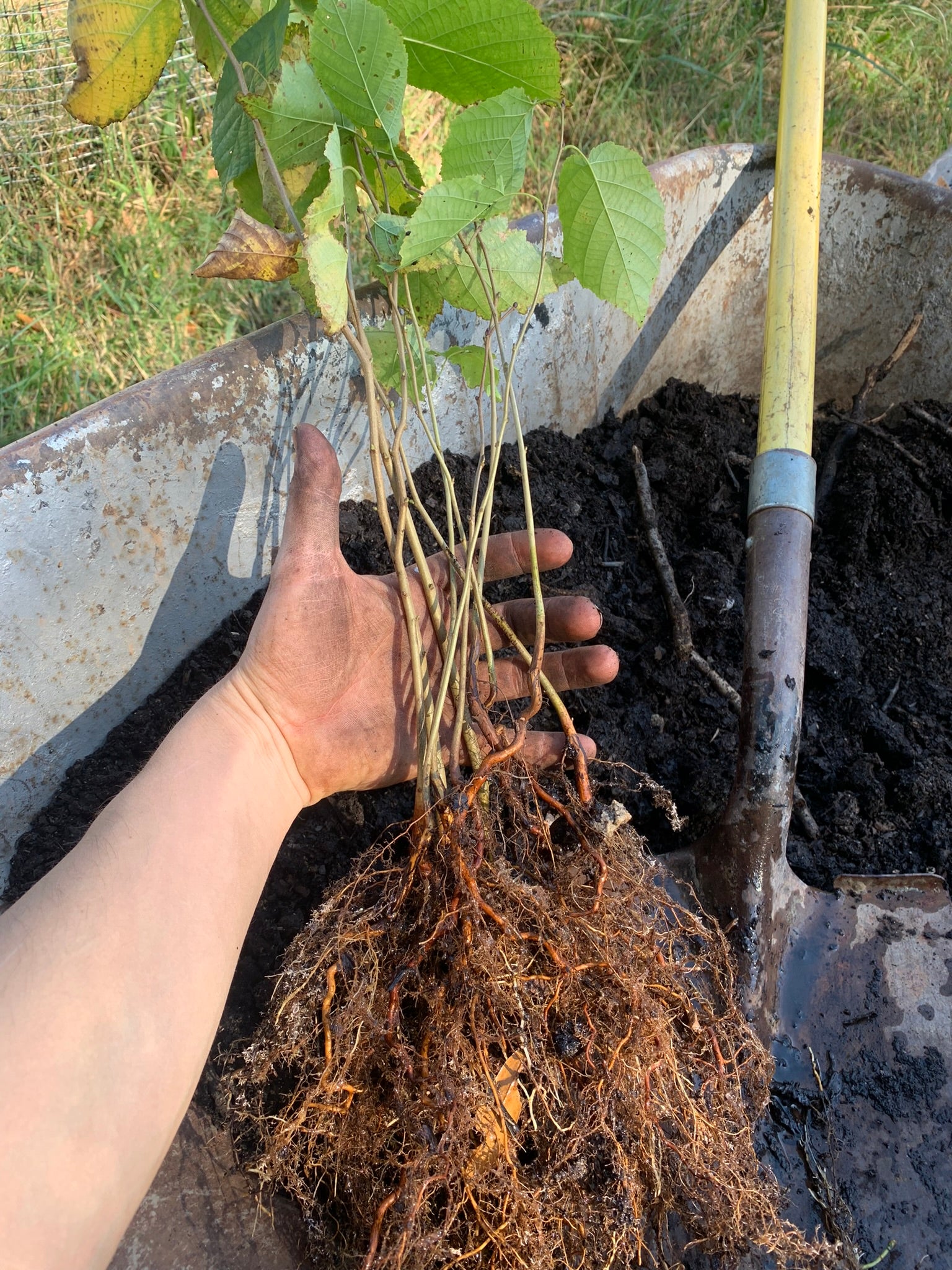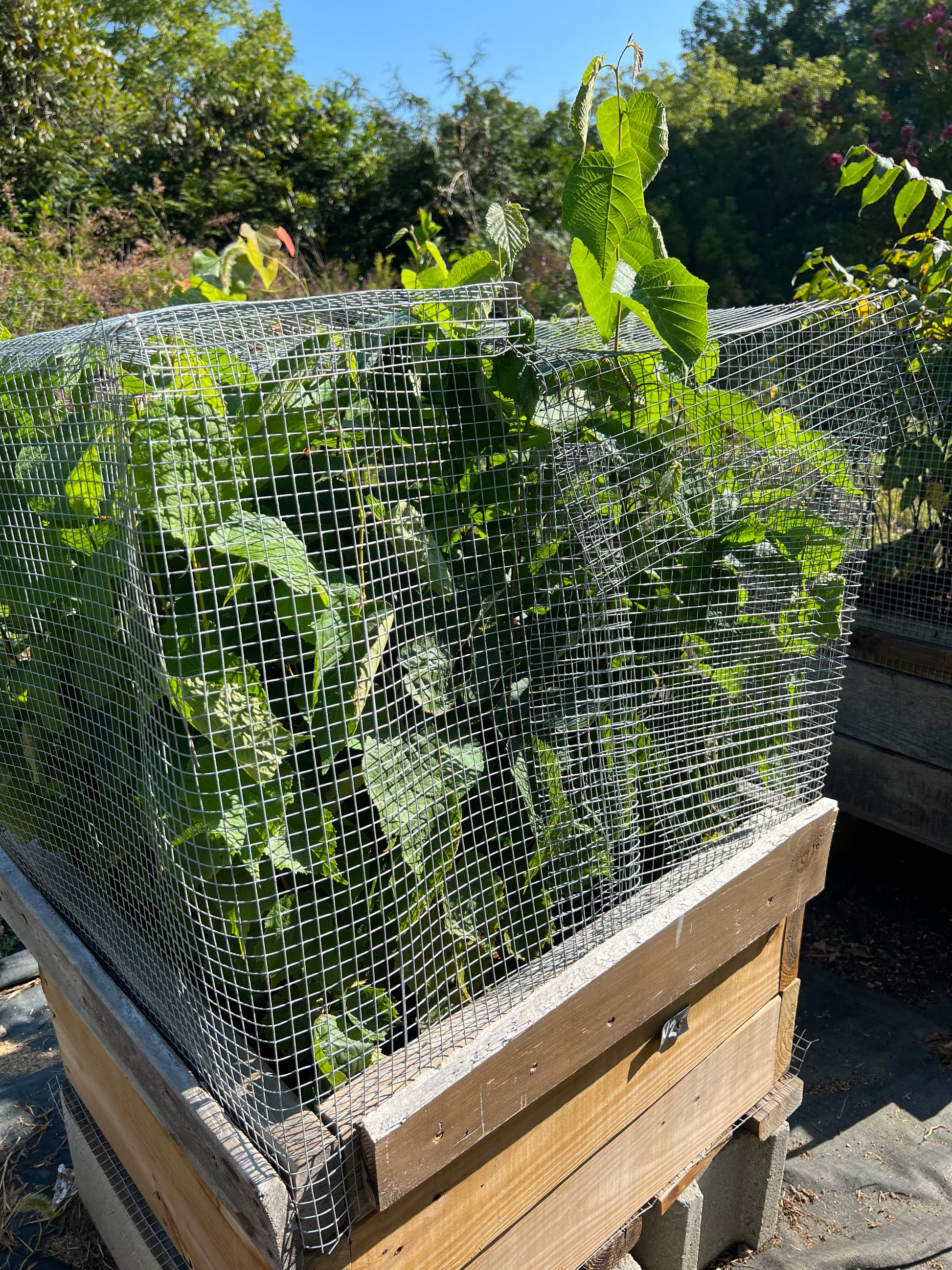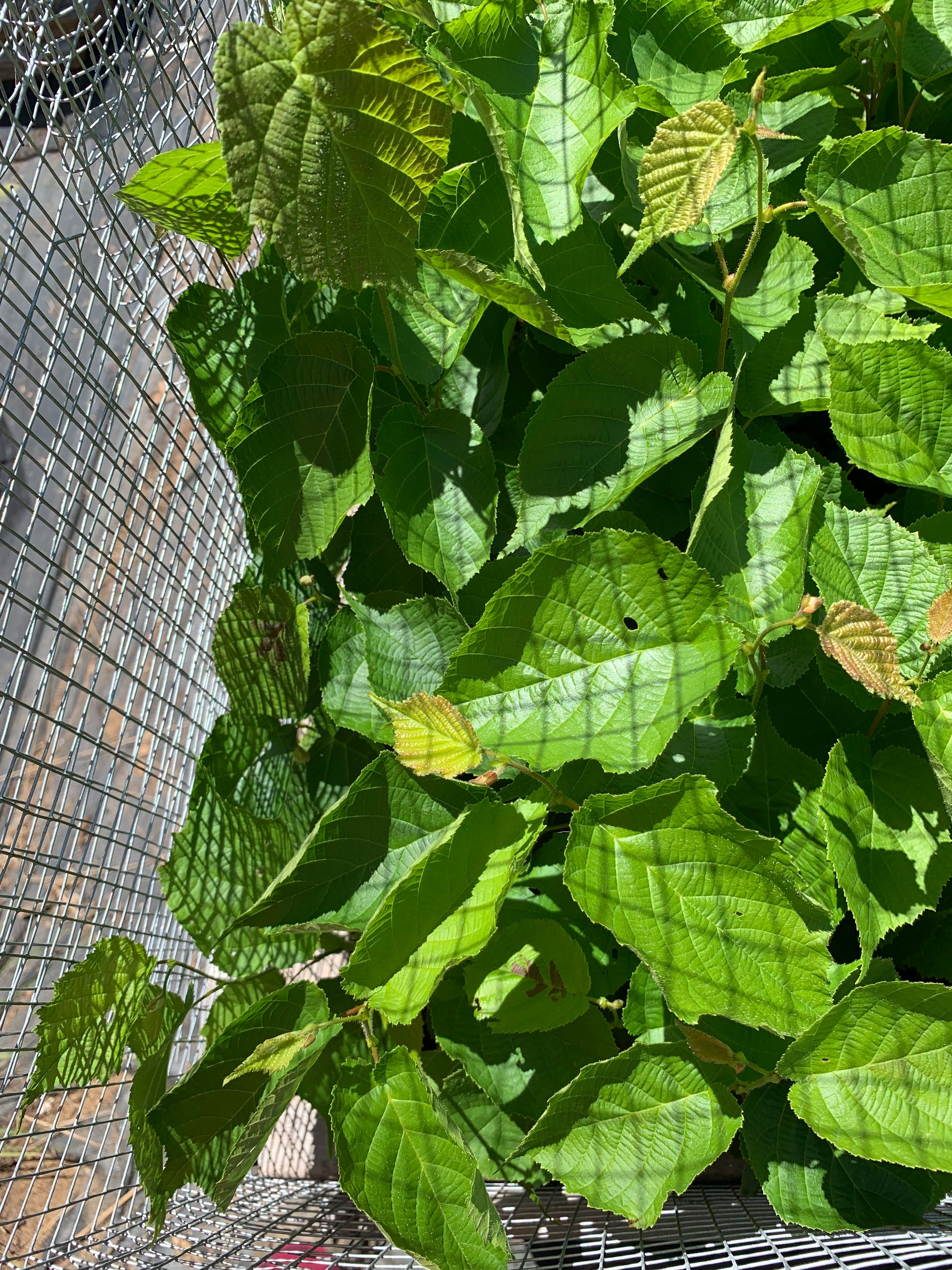Living Soil Tree Farm
Hazelnut
Hazelnut
Couldn't load pickup availability
Hazelnut
There are several species of hazelnut that grow around the world. Here we will mainly focus on the three most common types grown throughout the US. There are two native species, Corylus americana (common name American hazelnut also called wild hazelnut) and Corylus cornuta (common name beaked hazelnut less common in cultivation although involved in some breeding projects). Additionally there is the European species, Corylus avellana. There are also hybrid crosses produced by various breeding programs between these species. This year we are offering the wild American hazelnut as well as offspring from several hybrid hazelnuts.
American hazelnut is an incredible shrub. In my opinion this is an underplanted and underutilized tree. I will use tree and shrub interchangeably here but do note that American hazels grow as a multi stemmed shrub generally 8-15 feet tall. Let me tell you about why I love these trees so much.
American hazel is a hardcore plant. They can tolerate a wide range of soils from wet to dry. They can grow in sun or shade. Most importantly they make delicious hazelnuts! Do note that trees will be more productive in full sun but they can crop in part shade. Additionally they tend to be more vigorous when given access to consistent moisture but they are still very drought hardy once established. Hazelnut can be used to make a fast growing and food producing windbreak! The shrubs provide great wildlife habitat and the nuts are a prized food source of almost all animals. Hazelnuts are great at stabilizing slopes. They can spread through their roots to take up more space if you let them. Mowing can easily discourage this if not desired. They are a native plant, they want to be here. With a little care at establishment they are generally very easy to grow.
Most hazelnuts you buy at the store come from a slightly different species, the European Hazelnut. Although the nuts taste similar the trees are different. The European species can grow as a single stem tree and are harvested mechanically. The nuts of the European species drop free of their husk when ripe and are typically larger in size. The American hazelnut does not drop out of its husk when ripe. This means that at an industrial scale the European species is much more desirable as it is easily machine harvested. Groups such as the Savannah Institute are working on Hazelnut breeding and mechanized harvesting to make the American hazel more viable on a large scale. Right now the American species is difficult to machine harvest. Modified blueberry pickers can be used on American hazelnut. This is largely irrelevant to the small farm or home grower.
Due to various environmental factors the European hazel generally does not grow well on the east coast or in the Midwest. For these regions the American hazel or hybrids between the two are best suited. The main struggle for European hazelnut in these regions is the presence of a disease called eastern filbert blight. The wild American hazelnut and beaked hazelnut have evolved with the blight for many thousands of years and are resistant while the European species is usually killed off. Some breeding efforts have found European Hazelnuts that can survive the blight.
The European hazel has undergone many generations of breeding selection to produce varieties with larger nuts. This work is in an earlier stage for the American hazel. Within populations of American hazels the size of nuts can vary widely. Some shrubs produce smaller nuts while others make nuts just as large as European varieties. Productivity varies widely as well in wild populations. It is hard to know how much American Hazelnut diversity was lost in the process of colonization. Native cultures no doubt worked with these plants and improved their qualities over time. The destruction of native agriculture systems can still be felt today.
When planting hazelnut seedlings we recommend planting at a high density and evaluating over time which shrubs in your population you like best. Less desirable trees can be culled to allow the favored trees more space. At maturity American hazelnuts will spread 8-15 wide. You can plant them 8-15 feet apart if you would like. We often plant as close as 3 feet apart. At this spacing they will make a tight windbreak in a short amount of time. Without thinning in the long run this tight spacing will lead to decreased yields. There is a lot of flexibility here.
Hazelnuts require multiple plants for good pollination. They are wind pollinated so planting several short rows will lead to better pollination than one long row (if you plant in rows!).
2025 selections:
Wild American Hazelnut
Our seed for these trees came from several sources. The majority of seed came from a wild patch of Corylus americana growing along a dirt road in Cedar Grove NC. There are several dozen shrubs in this patch with varying nut size and productivity. Additionally we included some seed from shrubs planted at one of our friend's homes here in Bassett VA and also from Feralwood Nursery's "Promise Hedge". We highly recommend checking out our friends over at Feralwood Nursery in Western NC!
Hybrid Hazelnut
The seed for this selection comes from parent trees bred by Oregon State University. These trees are of the European species but have been bred for blight resistance and nut quality/productivity. Since our trees are seedlings they will be unique. Some will inherit the nut qualities and disease resistance of their parents while others may not. Our seed came from two parent trees this year, McDonald & Yamhill, grown by our friends at Humble Roots Tree Farm. Go check them out!! Since hazelnuts are wind pollinated it is possible that wild hazelnut pollen could have pollenated some of these seeds resulting in hybrid seeds.
Mixed hazelnut
This year we have one bed of hazelnut that was sown with the last of our seeds. We had enough wild hazelnut seed to sow roughly 3/4 of the bed and 1/4 came from our Hybrid hazelnut seed. Because they are all planted together in this bed we are offering them as a mixed bag.
2024 Selections:
Jefferson Seedlings - BARE ROOT
The seed for these trees came from a European Hazelnut variety called "Jefferson" which is described as combining very high resistance to eastern filbert blight (EFB) with large nut size, good kernel quality, and high yields. It was developed by the University of Oregon and has been released to the public free of restrictions. You can learn more about Jefferson by going to the University of Oregon's website. Jefferson tends to grow as a single stem upright small tree. We are offering seedlings of Jefferson and not asexually propagated clones. Each seedling will be unique and hopefully carry some of the beneficial traits of Jefferson!
These trees are roughly 2 feet tall
Yamhill Seedlings - BARE ROOT
The seed for these trees came from a European Hazelnut variety "Yamhill" which is described as having incredibly high resistance to eastern filbert blight. It is known for being a very productive tree but produces nuts on the smaller side. It was developed by the University of Oregon and has been released to the public free of restrictions. You can learn more about Yamhill by going to the University of Oregon's website. Yamhill tends to grow as a single stem upright small tree. We are offering seedlings of Yamhill and not asexually propagated clones. Each seedling will be unique and hopefully carry some of the beneficial traits of Yamhill!
These trees are roughly 2 feet tall
McDonald seedlings - BARE ROOT
The seed for these trees came from a European Hazelnut variety called McDonald. McDonald itself is highly resistant to Eastern Filbert Blight, however, seedlings will be genetically different from their parents and may not posses all the same traits. Like Yamhill and Jefferson this variety comes from Oregon State. McDonald tends to produce high yields and has been noted to be highly resistant to mold. Each seedling will be unique!
Materials
Materials
Shipping & Returns
Shipping & Returns
Dimensions
Dimensions
Care Instructions
Care Instructions
